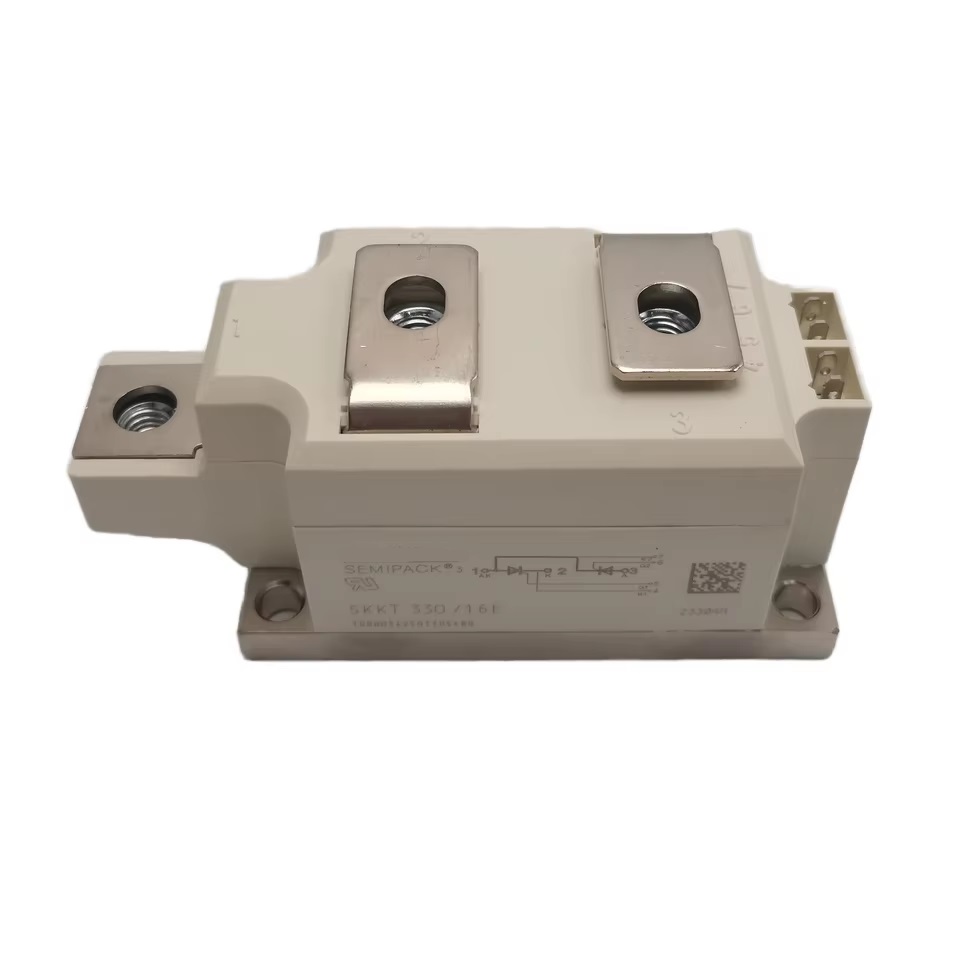Elevator and HVAC Systems Enhanced by Thyristor Module Integration
1. Importance of Power Control in Elevators and HVAC
Modern elevator and HVAC systems demand precise control over voltage and current to ensure both safety and performance. Thyristor modules offer robust phase control and surge resistance, making them an essential component in these applications. Their capacity to handle High surge current and maintain low on‑state voltage helps stabilize power delivery, even during system startups and load shifts.
2. HVAC Load Regulation with Dual Thyristor Modules
In HVAC units, thermal management relies on compressors and fans operating at variable speeds. Using a dual thyristor module, engineers can implement efficient industrial phase control, enabling smooth acceleration and deceleration. This prevents power spikes and extends equipment life while maintaining environmental comfort in buildings.
3. Safety and Efficiency in Elevator Control
Elevator systems require exceptional precision and redundancy. Thyristor-based controllers enable soft-start and braking functions, reducing stress on motors and mechanical components. The modules' low on‑state voltage reduces energy waste, while High surge current resistance protects the system from voltage anomalies caused by rapid user demand or grid fluctuations.
4. Radar and High-Frequency Load Control
Thyristor modules are also used in radar power supplies, where consistent frequency and high energy bursts are required. These systems benefit from the same features valued in elevators and HVAC—compactness, current handling, and voltage regulation. Engineers favor compact package solutions for embedded applications in both stationary and mobile radar units.
5. Environmental and Cost Benefits
Besides performance, thyristor integration in HVAC and elevator systems brings environmental advantages. Reduced energy consumption through low on‑state voltage and less maintenance from smooth industrial phase control result in long-term cost savings. These efficiencies align with global trends toward energy optimization and sustainability.
READ MORE:
- Compact and Ceramic-Based Thyristor Modules in UPS Applications
- The Power of 500A and 250A Thyristor Modules in UPS Design
- How Thyristor Modules Enhance UPS Systems for Critical Applications
- Scalable Power Solutions Using Thyristor Module Technology
- Versatile Applications of Thyristor Modules in Smart Industry
- Optimizing Soft-Start and Charging Systems with Thyristor Modules
- How Thyristor Modules Power Compact and High-Performance Systems
- Engineering Thyristor Module Performance for UPS Systems

